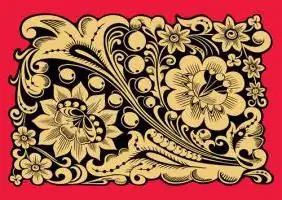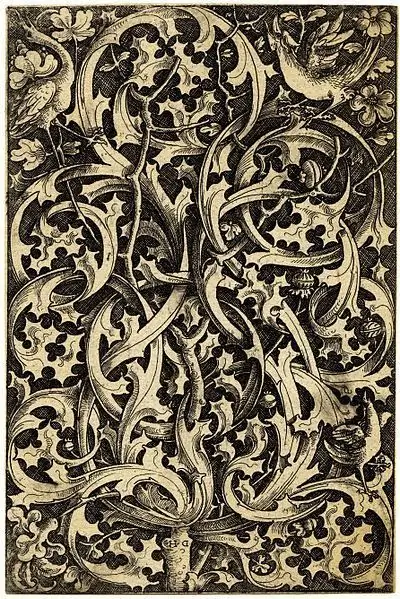2025 Author: Leah Sherlock | [email protected]. Last modified: 2025-01-24 17:46:30
Bashkir ornaments and patterns are an important component of material culture and at the same time one of the forms of spiritual creativity of the people of Bashkortostan. In this sense, folk art is the result of centuries of development: in ornamentation, in individual patterns, in colors, in their combination, craftsmen figuratively reflected the life of people and their understanding of the surrounding reality at different stages of history.

Ornament as a relationship of cultures
Bashkir ornament, techniques of ornamentation, colors, terminology of patterns are a concentrated reflection of the interweaving of the ethnic history of the Bashkir people. This concerns its origin, ethnic processes in the Middle Ages, ancient and modern cultural and historical interactions with neighboring peoples. Fine art, for a number of reasons, primarily due to the great stability of the ornament, is fuller andmore prominent than many other types of material culture, it bears traces of different eras and the interaction of different ethnic groups.
National ornaments and patterns can be found on almost all types of products made by caring hands of folk craftsmen:
- carpets, clothes, towels, curtains, linens;
- leather products, decorative crafts made from natural materials;
- dishes, household utensils;
- painting, drawings, engravings, printing and so on.

Carpet weaving
The ornament of the Bashkir people is especially clearly seen in carpet weaving. Patterned carpets were an obligatory part of a girl's dowry. Striped rugs were common throughout southern Bashkiria and among the Bashkir population of the Kurgan region. In southwestern, western and partly central Bashkiria, in the basins of the Dema and Ik rivers, as well as in the middle and lower reaches of the Belaya River, carpets with geometric patterns were predominantly woven.
From the middle of the 20th century in the south-west of the republic, floral motifs in the form of curls and branches with flowers, leaves, berries, apples, etc. became widespread in the ornament of carpets. In fact, this is a new, modern stage in the evolution of ornament and patterns on the territory of Bashkiria.
Striped carpets
Carpets with a striped pattern are woven in panels 20-22 cm wide. The pattern of the carpet is simple - it is longitudinal, serrated or smoothmulticolor stripes. A very simple striped Bashkir ornament suggests that this is the most ancient type of carpet.

Carpets with geometric and floral patterns
They are sewn together from two, sometimes three woven panels 40-60 cm wide and enclosed in a narrow border. The border is usually woven with a separate cloth and with a pattern somewhat different from the pattern of the central field. Sometimes such a carpet does not have a border at all.
The Bashkir ornament of carpets with a geometric pattern is predominantly rectilinear, with clear figures. Its main elements are ledge multicolored rhombuses, squares, eight-pointed stars and other figures that fill the ornamented field of the carpet in regular rows. They, in turn, are developed inside by the same, but smaller figures. Ornamental elements, if considered separately, are found in the ornamentation of many other peoples. However, in combination, in the overall composition, especially with well-chosen colors, they form that kind of colorful pattern that gives the ornament a unique Bashkir national flavor.
In the case of a floral interpretation of a geometric pattern, the processes of a traditional rhombus take on the shape of twigs with leaves, and the eight-pointed star is interpreted as an eight-petal flower.
Colours
The Bashkir national ornament is diverse in terms of colors. The colors of the stripes are red, yellow, green, blue, blue, purple and others in the deepest tones with the absolute predominance of colormadder. In an effort not to repeat each other, weavers achieve a significant variety in colors. With the simplest composition, by skillful selection and combination of colors, they achieve great brilliance of the ornament.

Patterned fabrics
Bashkir ornaments and patterns are still found on ceremonial national clothes. Bashkirs' fabrics made from vegetable fibers are distinguished by rich and juicy ornamentation, a variety of decoration techniques. For sewing everyday clothes, everyday items, the so-called motley was made - a colored canvas in a cage or in a strip. Festive and ceremonial clothes, items decorating the dwelling were ornamented with patterns of mortgage or broken weaving (woven fabric).
Women's shirts, aprons, women's and men's pants were sewn from multicolored fabric. Tablecloths, towels, napkins, curtains, various bags, etc. were made from it. The checkered pattern of motley is formed by the intersection of colored stripes. In the southern regions of Bashkiria and in the Trans-Urals, motley is woven in large cells. The colors are dominated by red, white and black. The national ornament of the multicolored fabric of the northern regions is distinguished by small pattern cells and more variegated colors. Often checkered patchwork, intended for aprons, tablecloths and curtains, was decorated and decorated with martial patterns like medallion rosettes.

Types of ornament
Only decorative items for the home were decorated with weaving patterns: curtains, towels and tablecloths. ATornamentation of clothes, the mortgage technique was not used. The simplest elements of the ornament made with bookmarks are massive ledge lines - this is a typical Bashkir ornament. The drawing of these lines becomes more complicated, they, connecting with each other, form X-shaped, 3-shaped, diamond-shaped, 8-shaped figures and other more complex patterns. The eight-pointed star, cross, swastika, rhombus with extended sides or with paired curls at the corners, horn-shaped figures are very characteristic.
Embroidery
Traditionally, in Bashkiria, embroidery was even more important than patterned fabrics. This is explained by a simpler technique of work, while you can make more creative efforts. Weaving required raw materials and looms, and with the spread of ready-made fabrics, making your own became an anachronism. But embroidery is still in demand. Bashkir patterns and ornaments are distinguished by a great variety. Patterns depend on the embroidery technique and how the draft image is applied to the surface to be embroidered.

The main elements of the ornament are figurines in the form of paired ram horns, S-shaped lines, which in various combinations give patterns in the form of the letter X, swastikas or form highly stylized plant motifs. The Bashkir ornament is embroidered on cloth, velvet, less often on cotton fabric with silk, woolen or cotton threads. Patterns on saddlecloths are usually embroidered on a red or green background, and on pouches and decorative ribbons there is also a black background, which givespattern more brightness and provides a clear sound of each color in the pattern. For the patterns themselves, colors of warm tones are usually chosen, but, as a rule, contrasting with the background. Red, yellow, green are most often used, and very rarely blue and blue. The favorite red color is often found on patterns with a red background.
Woodcarving
Carving, ornaments on dishes and painting on wood were not as widespread among the Bashkirs as, for example, embroidery or weaving. The exception is architectural carving, which appeared everywhere in Bashkiria from the second half of the 19th century. Artistic woodcarving was most widespread in the mountainous forest part of southeastern Bashkiria, where the vast taiga forests of the Southern Urals are concentrated, which provided a variety of raw materials for "wooden production."
The needs of subsistence farming and the presence of forests have long made it necessary and possible to make various utensils and household items from wood. At the same time, among the Bashkirs, practicality and expediency were connected and closely intertwined with aesthetic tastes. When making household items, the Bashkirs tried to make them not only durable, easy to use, but also beautiful. It is no coincidence that the most striking, interesting was the ornament on dishes and objects that were constantly used daily in everyday life. At the same time, in the manufacture of ladles for koumiss, in the ornamentation of utensils, in the painting of wooden coasters for the chest, along with the national color developed over the centuries, elements of patterns characteristic of ancient tribes are preserved,who once participated in the ethnic formation of the Bashkir people.

Conclusion
The ornament of the Bashkir people is the same folklore. It is a product of the collective creativity of successive generations. Each pattern is the result of collective creativity, at the same time it is a product of the artistic imagination of an individual. Many masters not only make changes to the patterns they know, but also create new ones. In turn, the newly created patterns do not remain unchanged. Other artists polish them or, relying on traditional patterns, create their own. Hence the diversity and richness of forms that we observe in the folk ornamentation of Bashkiria.
Recommended:
Russian folk painting: types, techniques, patterns and ornaments

One of the most striking phenomena of Russian folk art is painting. She decorated various household items. Everyone can easily name Khokhloma and Gzhel. But few people know that there are many more types of Russian folk painting. This article will describe the most famous mural styles
Byzantine, Georgian and Old Russian ornaments and their meanings. Old Russian ornament, photo

Old Russian ornament is one of the most interesting phenomena in world artistic culture. Throughout time, it has been modified and supplemented. Despite this, the Russian ornament of any age is considered one of the most interesting. In our article you can find more detailed information not only about ancient Russian clipart, but also about the ornaments of other peoples
Ornaments and patterns on dishes

Since ancient times, people have tried to make the world around them more beautiful. Therefore, they decorated everything that surrounded them: the walls of dwellings, clothes, household items. The simplest were the patterns on the dishes, consisting of repeating geometric shapes, segments, dots. Gradually, plant elements began to be woven into the ornaments, symbolically close to geometric
Modern: patterns and ornaments

Modern is a short but surprisingly powerful period in art. Ornamental images created at that time continue to fascinate until now. The plexus of plants and the smooth bends of the wings of birds - what is the hidden meaning hidden in them?
Ornament of geometric shapes. Ornament styles. Ornament elements

The text tells about the origin and development of the oldest types of ornament, and also describes their properties and gives a brief classification

